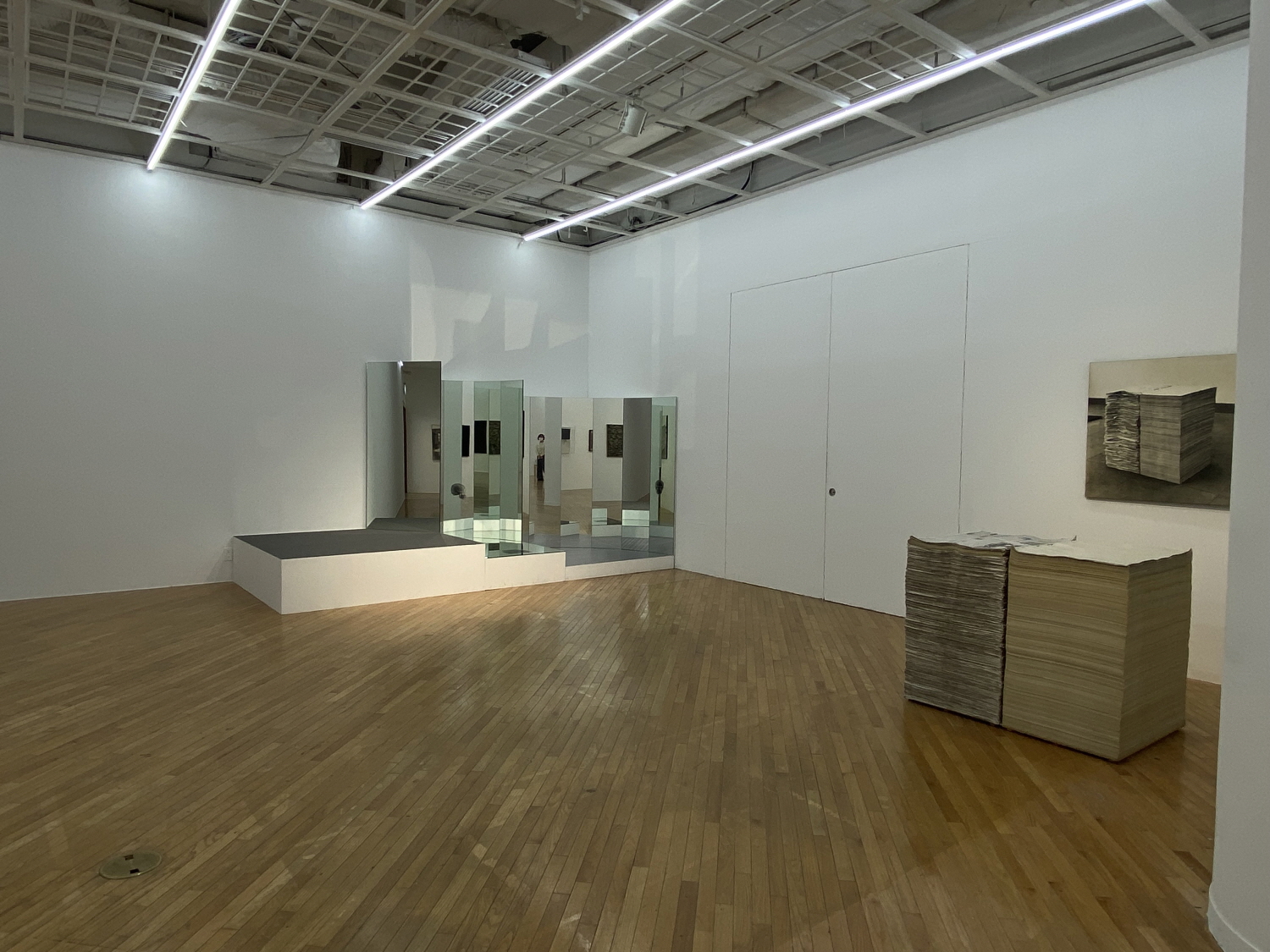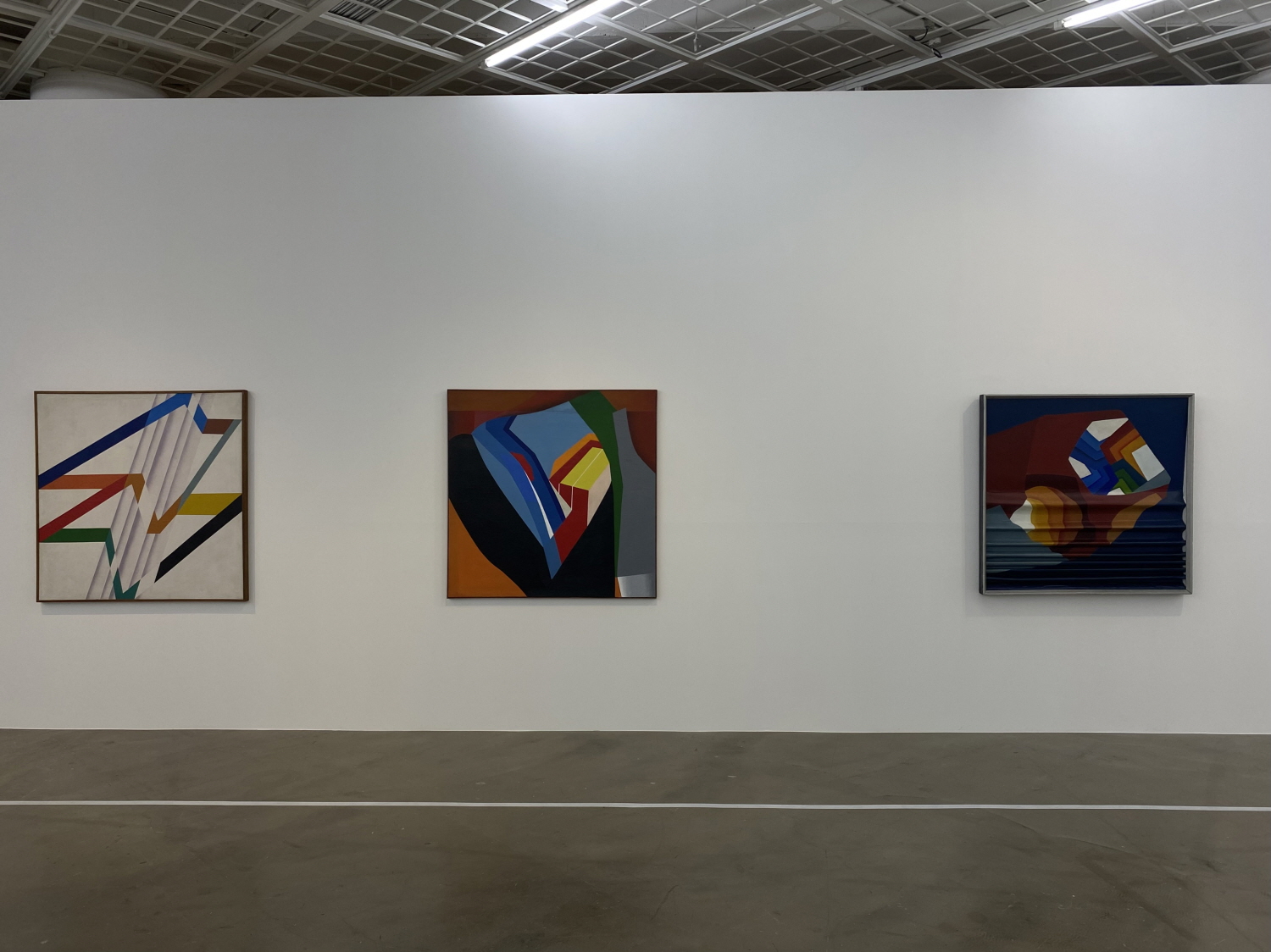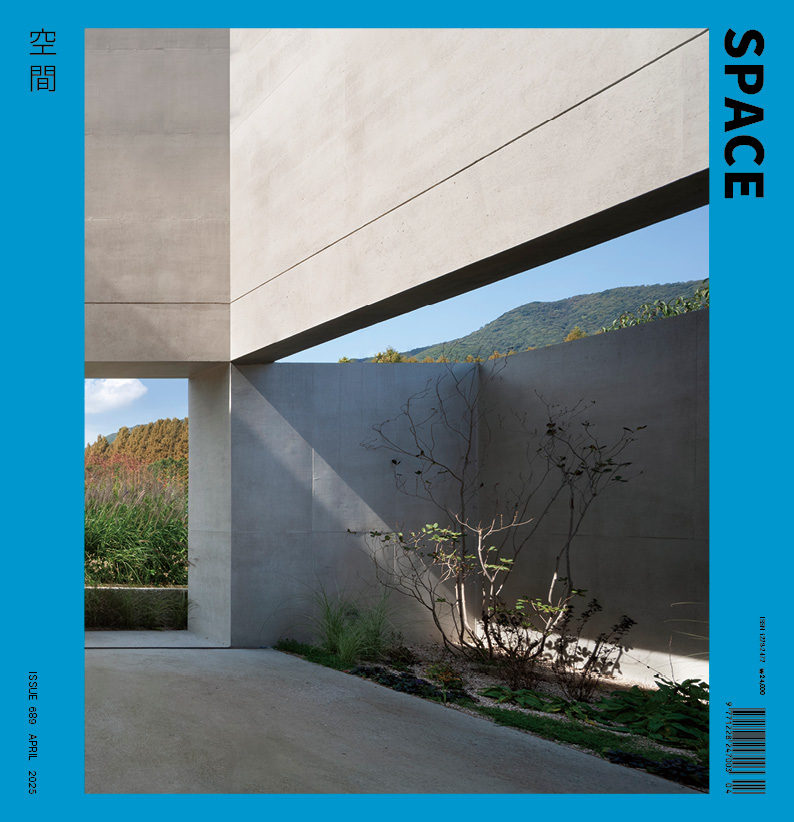SPACE April 2025 (No. 689)

Installation view of Work (1970, reproduction in 2025) and Counter-Phase (1971, reproduction in 2012)

Exhibition view of White Paper on Urban Planning series
‘Ha Chong-Hyun 5975’ is on show at the Art Sonje Center from Feb.14 to Apr. 20. Ha Chong-Hyun, a master of Dansaekhwa, is well known for his use of its unique technique, baeapbeop (the backpressure method). This exhibition covers a variety of works from a wide range of timeframes (from 1959 to 1975) to explore how his work interacted with this particularly Korean artistic context and how it developed over time. Art Sonje Center closely collaborated with major public and private museums, including the National Museum of Modern and Contemporary Art, Korea, the Seoul Museum of Art and the Leeum Museum of Art, to host this exhibition.
In total, the exhibition has four different sections. The first section, ‘Post-War Devastation and Informel (1959 – 1965)’, begins with a portrait of his youth. In this drawing, visitors find a fresh graduate with a blank look on his face. His face reflects the mood in Korea in the late 1950s, the post-war era. In his early career, he was deeply inspired by the European Informel movement, which rejected standardised painting frameworks and emphasised materiality. At the same time, he also attempted to reinterpret Informel within a Korean context by visualising the collective trauma of war and social upheaval with his experiments with materials and actions. To be more specific, one of his experiments can be explained as follows: applying thick layers of paint to a base surface with threads, then scorching the painting.
The second section, ‘Urbanisation and Geometric Abstraction (1967 – 1970)’, specifically focuses on the years between 1967 and 1970. In this period, he began to pay attention to the social changes driven by urbanisation and economic growth and provided a unique response in the completion of one of his major works, White Paper on Urban Planning. This abstract painting, which portrays the rapid process of industrialisation and modernisation is well known for its bold colour and repetitive patterns. On the other hand, he also worked on reimagining traditional Korean patterning in a modern way. Naissance, in which traditional Korean dancheong patterns and colours were used along with a matweaving technique, is an example that demonstrates how he merged a traditional aesthetic with modern visual presentation.
The third section, ‘The Korean Avant Garde Association (AG)—New Art Movements (1969 – 1975)’, highlights his experimental work through his involvement with the AG. In this section, visitors will be impressed by its exploration of rare historical materials, including artworks and photographs taken in 1969, when the association was established, and a copy of the first issue of AG, the first journal of the Korean art association. Ha Chong-Hyun’s work offers a strong impression of the rigid social atmosphere of the time, its media censorship and social repression by employing everyday materials such as newspaper, toilet paper, cement powder, springs, and nails. In addition, various installation works from this period are also notable. This exhibition features a recreation of the artist’s mirror-based installation work, Work (1970) among others.
Lastly, the final section, ‘Conjunction—The Back-Pressure Method (1974 – 1975)’, showcases a number of works depicted between 1974 and 1975. In this period, he immersed himself in inventing his unique technique of baeapbeop (the backpressure method). For example, In Conjunction, he applies paint to the reverse side and then pushes it through the fabric using a large wooden spatula allowing the paint seep onto the front. This Conjunction series later further developed into another title, Post-Conjunction and it reached its peak with Dansaekhwa. In the section, he shows his progress in overcoming the limitation of two-dimensional surfaces by pushing his spoon. A series of challenges undertaken by Korean contemporary artists, including Ha Chong-Hyun established the uniqueness of ‘Dansaekhwa’ and drew a clear distinction from ‘monochrome painting’.





